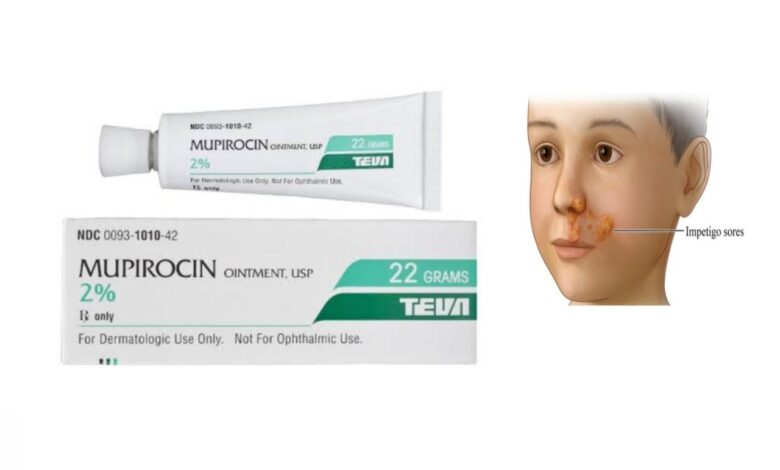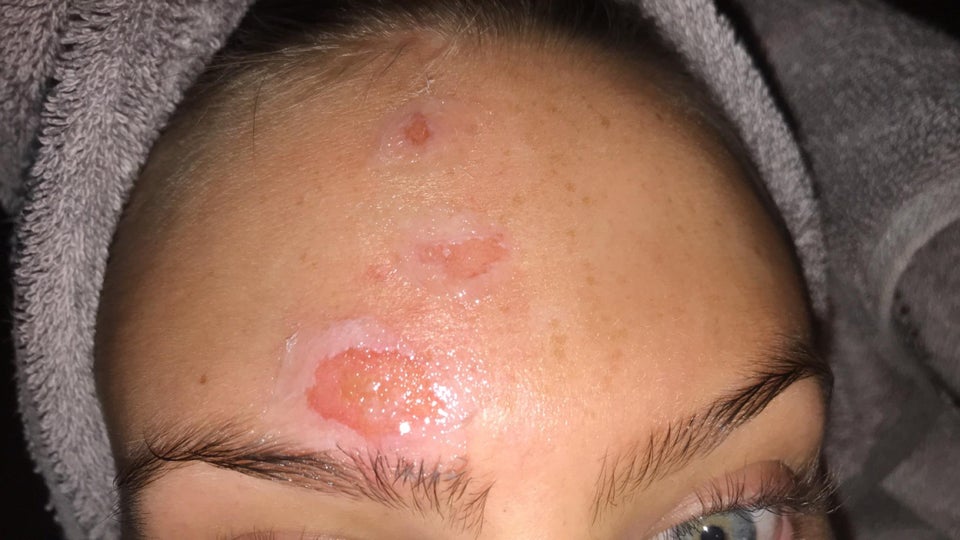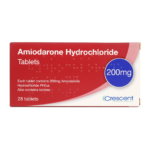Mupirocin Ointment: Uses, Mechanism of Action, Side Effects

Mupirocin ointment is a topical medication that belongs to a group of medicines called antibiotics. It is used to treat secondarily infected traumatic skin lesions due to specific bacteria. Mupirocin topical ointment is used to treat impetigo, a common and contagious skin infection. Bacteria like Staphylococcus aureus or Streptococcus pyogenes infect the outer layers of skin, called the epidermis. The face, arms, and legs are most often affected.
Mupirocin ointment 2% is active against a wide range of bacteria that can be found in skin infections. In many countries, mupirocin ointment is available “over the counter” (OTC) but increasing resistance patterns (particularly mupirocin-resistant Staphylococcus aureus) has forced some to reverse the OTC medicine status back to prescription-only status.
Mupirocin topical ointment is available as the brand-name drug Centany. It’s also available as a generic drug. Generic drugs usually cost less than the brand-name version. In some cases, they may not be available in every strength or form as the brand-name drug. Mupirocin topical ointment may be used as part of a combination therapy. This means you may need to use it with other medications.
How Mupirocin Ointment work
Mupirocin belongs to a class of drugs called topical antibacterials. A class of drugs is a group of medications that work in a similar way. These drugs are often used to treat similar conditions. Mupirocin works to kill the bacteria that are causing your infection. These include strains of Staphylococcus aureus and Streptococcus pyogenes. Mupirocin stops the bacteria from multiplying.

How To Use Mupirocin Ointment
Read the Patient Information Leaflet if available from your pharmacist before you start using mupirocin and each time you get a refill. If you have any questions, ask your doctor or pharmacist.
Use this medication only on the skin. Clean and dry the affected area first. Then apply a small amount of ointment to the area as directed by your doctor, usually 3 times a day. You may cover the treated area with a bandage.
Use this medication regularly to get the most benefit from it. Continue to use it for the full time prescribed, even if symptoms disappear after a few days. Stopping the medication too early may result in a return of the infection.
Avoid using this medication around your eyes, nose, mouth, or on large areas of damaged or broken skin unless otherwise directed by your doctor. If you accidentally get it in your eyes, nose, or mouth, rinse well with plenty of water.
Adult dosage (ages 18 years and older)
Typical dosage: A small amount of the ointment is applied to the infected skin three times per day for up to 10 days.
Child dosage (ages 2 months to 17 years)
Typical dosage: A small amount of the ointment is applied to the infected area of the skin three times per day for up to 10 days.
Child dosage (ages 0–1 month)
This medication hasn’t been studied in children younger than 2 months of age.
Tell your doctor if your condition does not get better in 3 to 5 days.
What are the side effects of mupirocin ointment?
Remember that your doctor has prescribed this medication because he or she has judged that the benefit to you is greater than the risk of side effects. Many people using this medication do not have serious side effects.
Although uncommon, mild burning or stinging after using this medication may occur. If you have severe burning, stinging, or irritation, stop using this medication and tell your doctor right away.
This medication may rarely cause a severe intestinal condition (Clostridium difficile-associated diarrhea) due to a type of resistant bacteria. This condition may occur during treatment or weeks to months after treatment has stopped. Tell your doctor right away if you develop:
- diarrhea that doesn’t stop
- abdominal or stomach pain/cramping
- blood/mucus in your stool
Do not use anti-diarrhea or opioid medications if you have any of these symptoms because these products may make them worse.
Use of this medication for prolonged or repeated periods may result in a new skin infection caused by fungus or yeast. Tell your doctor right away if you notice signs of a new infection, or if your current infection does not get better, or if it gets worse.
A very serious allergic reaction to this drug is rare. However, get medical help right away if you notice any symptoms of a serious allergic reaction, including:
- rash
- itching/swelling (especially of the face/tongue/throat)
- severe dizziness
- trouble breathing
This is not a complete list of possible side effects. If you notice other effects not listed above, contact your doctor or pharmacist.
In the US – Call your doctor for medical advice about side effects. You may report side effects to FDA at 1-800-FDA-1088 or at www.fda.gov/medwatch.
In Canada – Call your doctor for medical advice about side effects. You may report side effects to Health Canada at 1-866-234-2345.
Precautions
Before using Mupirocin Ointment, tell your doctor or pharmacist if you are allergic to it; or if you have any other allergies. This product may contain inactive ingredients (such as polyethylene glycol found in some brands), which can cause allergic reactions or other problems. Talk to your pharmacist for more details.
Before using this medication, tell your doctor or pharmacist your medical history, especially of:
kidney disease (if you are using a brand of mupirocin that contains polyethylene glycol)
Before having surgery, tell your doctor or dentist about all the products you use (including prescription drugs, nonprescription drugs, and herbal products).
During pregnancy, this medication should be used only when clearly needed. Discuss the risks and benefits with your doctor.
It is unknown if this drug passes into breast milk. Consult your doctor before breast-feeding.
Drug Interactions
Drug interactions may change how your medications work or increase your risk for serious side effects. This document does not contain all possible drug interactions. Keep a list of all the products you use (including prescription/nonprescription drugs and herbal products) and share it with your doctor and pharmacist. Do not start, stop, or change the dosage of any medicines without your doctor’s approval.
Overdose
This medicine may be harmful if swallowed. If someone has overdosed and has serious symptoms such as passing out or trouble breathing, call 911. Otherwise, call a poison control center right away. US residents can call their local poison control center at 1-800-222-1222. Canada residents can call a provincial poison control center.
Notes
Do not share this medication with others.
This medication has been prescribed for your current condition only. Do not use it later for another infection unless your doctor tells you to.
Missed Dose
If you miss a dose, use it as soon as you remember. If it is near the time of the next dose, skip the missed dose. Use your next dose at the regular time. Do not double the dose to catch up.
Storage
Store at room temperature. Keep all medications away from children and pets.
Do not flush medications down the toilet or pour them into a drain unless instructed to do so. Properly discard this product when it is expired or no longer needed. Consult your pharmacist or local waste disposal company.





